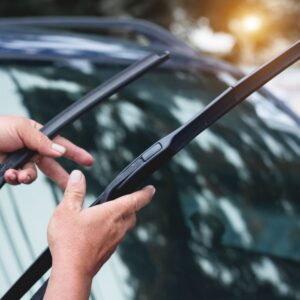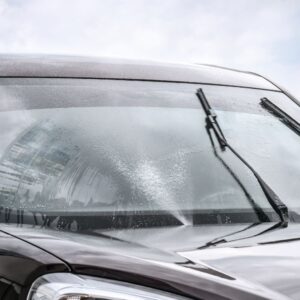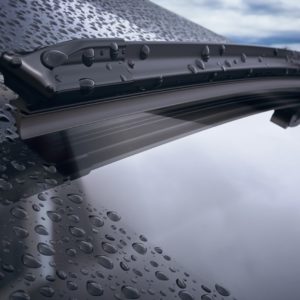Your vehicle’s windshield wipers are designed to sweep water droplets away from the middle of your windshield so you can have an unobstructed field of view. Wipers can also clear dirt, dust, or bugs with the help of wiper fluid. However, gunk can also build up on your windshield wipers and hinder their ability to clean your windshield. Having a dirty windshield wiper might sound like a minor issue, but having an obstructed view out of your windshield can result in major consequences. In this article, we’ll tell you why it’s important to keep your windshield wiper blades clean and give you tips on how to clean them.
Why You Should Keep Windshield Wipers Clean
Dirty windshield wiper blades won’t be able to effectively sweep water off your windshield. Dust, mud, or even dead bugs on your wiper blades can cause water to smear across the windshield instead of being seamlessly swept away. The streaks of water that remain on your windshield can obstruct your vision in heavy rainstorms and make driving unsafe.
Contaminants can prevent your wiper blades from properly clearing debris like mud, dirt, and dead bugs. A dirty windshield wiper can also smear debris across the windshield’s surface instead of moving them to the sides. This can obstruct your view depending on the quantity of litter. This can also lead the wiper blades to create a chattering sound.

Most of a driver’s decisions are based on visual cues. Poor visibility can impede your ability to avoid obstacles, pedestrians, and other vehicles.
Additionally, having debris on your windshield can also damage the glass’s surface. If you use your windshield wipers when potentially abrasive materials like dust or mud are present, then it could result in permanent scratches. If your windshield has rock chips, dirt and debris can settle in the cracks. As your wiper blades pass over these cracks, they can spread or cause the cracks to get deeper.
Lastly, clean windshield wipers prolong the lifespan of your windshield and the wiper blades themselves. Regularly cleaning your windshield wipers can pay off down the line.

How to Clean Your Windshield Wipers
Cleaning your wiper blades is a relatively simple task. To clean your windshield wiper, you’ll need a microfiber cloth. A rag or paper towel is also fine. There isn’t really a product designed to be a windshield wiper cleaner. Soapy water, denatured alcohol, or glass cleaner are great cleaning solutions.
First, lift the wiper blades from your windshield. Then, pour your cleaning solution into your cloth of choice. Rub the cloth on the blade repeatedly. It might take four or five passes before the wiper blade is completely clean.
The best way to clean windshield wipers is to clear all the gunk, dirt, or dust that might have stuck to the part of the blade that’s in contact with the glass. This debris is what hinders your wiper blade’s performance and scratches your windshield.
The blades can be cleaned with little effort. Usually, simply running the cloth along the rubber or silicone is typically enough to remove all of the debris. You can verify if the wiper blade is clean by wiping it with the clean side of the cloth and checking if the cloth has picked up any remaining dirt.
It’s good practice to clean your wiper blades every three to six weeks. However, if water streaks appear when you turn on the wipers, you might need to clean them sooner.
You can also check out this video in case you need to replace your wiper:
Any information provided on this Website is for informational purposes only and is not intended to replace consultation with a professional mechanic. The accuracy and timeliness of the information may change from the time of publication.
































